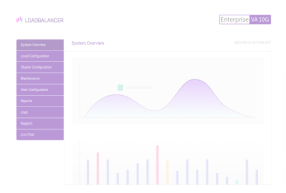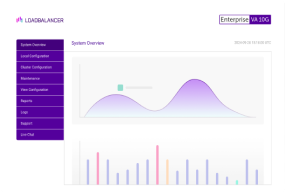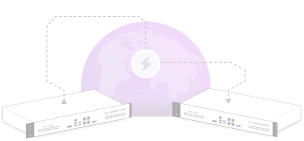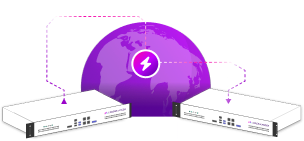Benefits of load balancing Infinitt PACS
Load balancing Infinitt PACS servers in a cluster, ensures zero downtime and greatest resource efficiency:
- High Availability (HA): Load balancing ensures that the PACS service remains operational even if one of the backend servers fails or needs maintenance. By constantly monitoring the health of the servers and automatically redirecting traffic to the remaining healthy servers, it eliminates a single point of failure, minimizing downtime and ensuring clinicians have uninterrupted access to critical patient images and data.
- Performance: Load balancers intelligently distribute the incoming traffic (like image requests, DICOM data transfers, and web queries) across all available PACS servers. This prevents any single server from becoming overwhelmed or creating a bottleneck, which in turn leads to: 1) faster image retrieval and viewing for radiologists and clinicians; 2) improved system response times during peak usage hours; and 3) optimal utilization of all server resources.
- Scalability: As a healthcare organization grows, the volume of imaging data (DICOM studies) and the number of concurrent users constantly increase. Load balancing allows the IT infrastructure to scale out easily. New PACS servers can be added to the load balancer pool without interrupting the service, seamlessly distributing the increased workload and ensuring the system can handle future growth without performance degradation.
About Infinitt PACS
INFINITT PACS is an award-winning, web-based image management system. It provides a streamlined reading work-flow and scalable and expandable architecture, as well as optional virtualized server architecture for highest availability and disaster recovery. INFINITT RIS, PACS, Mammo PACS, Cardiology Suite and 3D/Advanced Visualization modules all run on a single-database platform, providing single desktop, single sign-on and a similar look and feel across applications. INFINITT also offers an Enterprise Imaging solution with INFINITT RIS/PACS on a powerful VNA platform that provides seamless integration with all major EMR’s.
Why Loadbalancer.org for Infinitt PACS?
Loadbalancer’s intuitive Enterprise Application Delivery Controller (ADC) is designed to save time and money with a clever, not complex, WebUI.
Easily configure, deploy, manage, and maintain our Enterprise load balancer, reducing complexity and the risk of human error. For a difference you can see in just minutes.
And with WAF and GSLB included straight out-of-the-box, there’s no hidden costs, so the prices you see on our website are fully transparent.
More on what’s possible with Loadbalancer.org.
How to load balance Infinitt PACS
The load balancer can be deployed in four fundamental ways: Layer 4 DR mode, Layer 4 NAT mode, Layer 4 SNAT mode, and Layer 7 Reverse Proxy (Layer 7 SNAT mode).
For Infinitt PACS, Layer 7 Reverse Proxy is recommended.
Virtual service (VIP) requirements
To provide load balancing and HA for INFINITT PACS, the following VIPs are required:
- INFINITT Web
- DICOM
- QUERY
- MWL
- INFINITT Check
All VIPs should be configured to use Source IP persistence in order to function correctly. For the INFINITT PACS Web VIP, HTTP Cookie can be used in combination with Source IP. This means, in the event that the HTTP cookie persistence method fails, persistence will fall back to using Source IP.
The following table shows the ports that are load balanced:
| Port | Protocols | Use |
|---|---|---|
| 80 | TCP/HTTP | Web portal access |
| 104 | TCP | DICOM communication |
| 105 | TCP | DICOM Query communication |
| 204 | TCP | Modality Worklist communication |
The INFINITT Web service uses the Negotiate HTTP (HEAD) health check to confirm that both the port and website are running and accessible. The remaining virtual services will use the connect to port health check.
Load balancing deployment concept
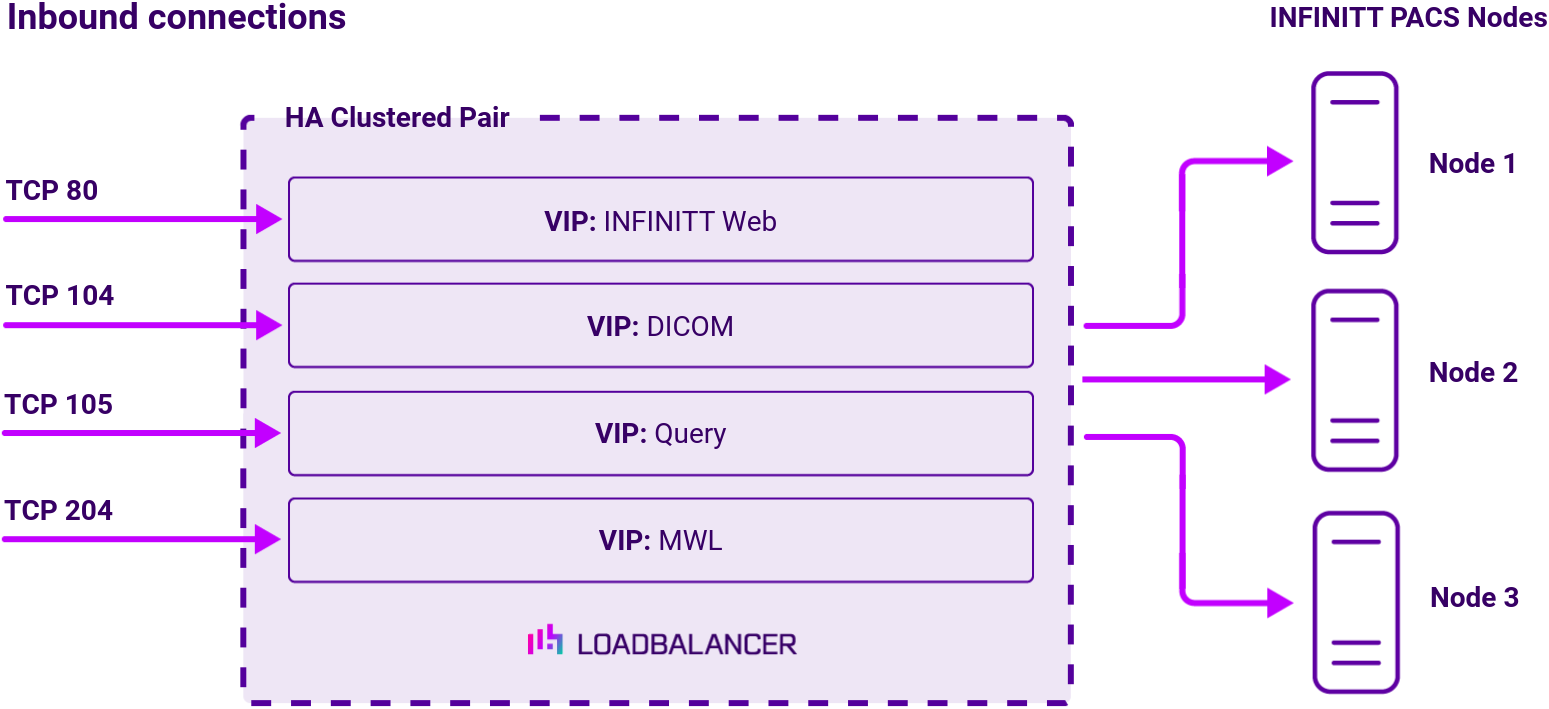
Note
The load balancer can be deployed as a single unit, although Loadbalancer.org recommends a clustered pair for resilience & high availability.
About Layer 7 Reverse Proxy
Layer 7 Reverse Proxy uses a proxy (HAProxy) at the application layer. Inbound requests are terminated on the load balancer and HAProxy generates a new corresponding request to the chosen Real Server. As a result, Layer 7 is typically not as fast as the Layer 4 methods. Layer 7 is typically chosen when either enhanced options such as SSL termination, cookie based persistence, URL rewriting, header insertion/deletion etc. are required, or when the network topology prohibits the use of the Layer 4 methods.
The image below shows an example Layer 7 Reverse Proxy network diagram:
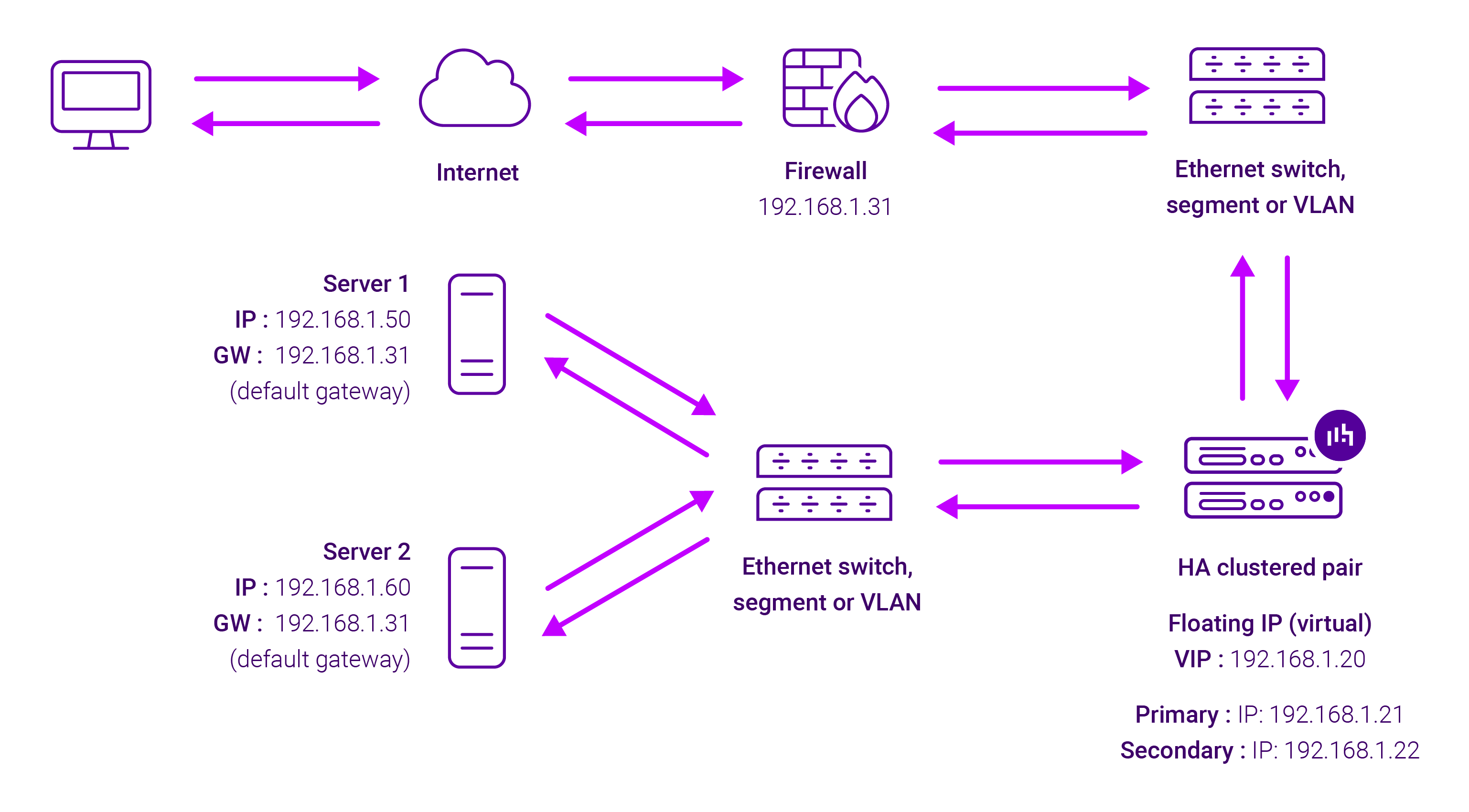
Because Layer 7 Reverse Proxy is a full proxy, Real Servers in the cluster can be on any accessible network including across the Internet or WAN.
Layer 7 Reverse Proxy is not transparent by default, i.e. the Real Servers will not see the source IP address of the client, they will see the load balancer’s own IP address by default, or any other local appliance IP address if preferred (e.g. the VIP address).
This can be configured per Layer 7 VIP. If required, the load balancer can be configured to provide the actual client IP address to the Real Servers in 2 ways. Either by inserting a header that contains the client’s source IP address, or by modifying the Source Address field of the IP packets and replacing the IP address of the load balancer with the IP address of the client. For more information on these methods, please refer to Transparency at Layer 7 in the Enterprise Admin Manual.









